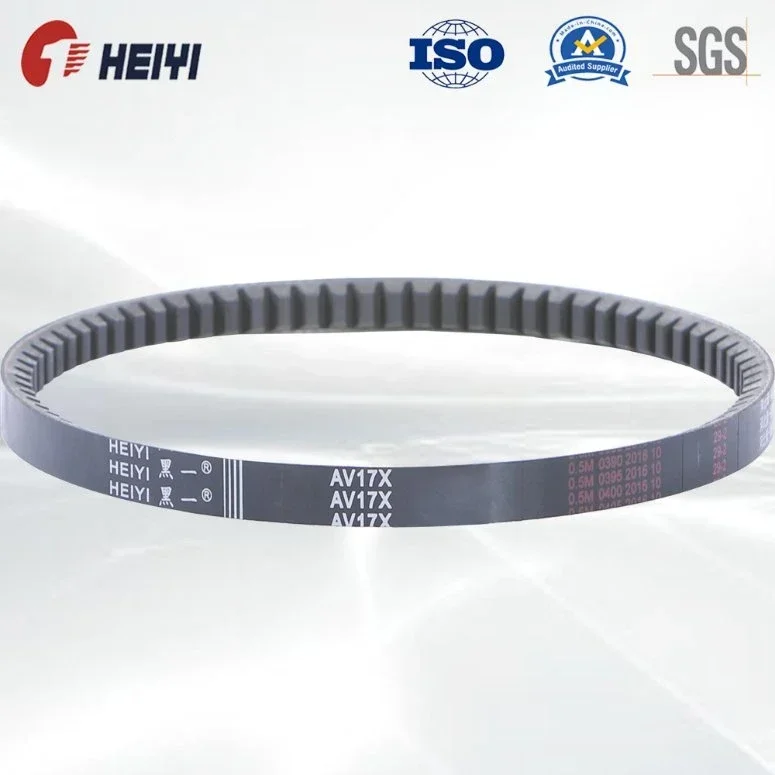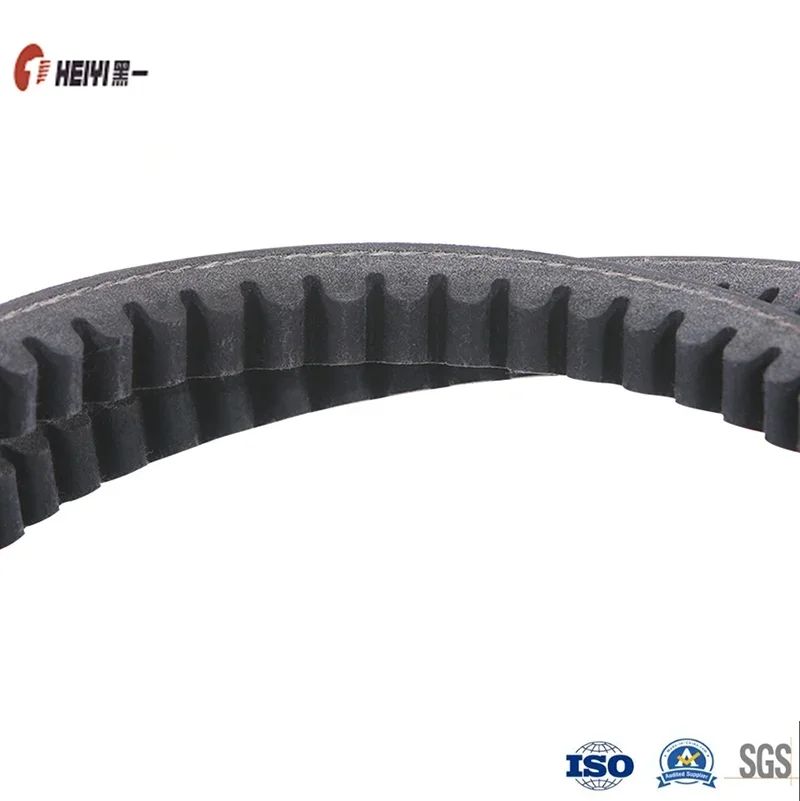EPDM rubber V belts are widely used in various industrial applications due to their exceptional properties and advantages. In this article, we will explore the definition and composition of EPDM rubber V belts, the manufacturing process involved, their applications, and the numerous advantages they offer in comparison to other belt materials. Additionally, we will provide maintenance and care tips to ensure the longevity and optimal performance of EPDM rubber V belts.
Understanding EPDM Rubber V Belts
EPDM stands for Ethylene Propylene Diene Monomer, which is a synthetic rubber compound known for its excellent resistance to heat, weathering, and chemicals. EPDM rubber V belts are specifically designed with a V-shaped cross-section, allowing them to transmit power efficiently and effectively. These belts are commonly used in industrial machinery, automotive applications, and various power transmission systems.
Definition and Composition of EPDM Rubber V Belts
EPDM rubber V belts are made up of a combination of EPDM rubber, reinforcing materials, and other additives. The EPDM rubber provides the belt with its exceptional resistance to heat, weathering, and chemicals, making it suitable for a wide range of industrial applications. The reinforcing materials, such as polyester or aramid fibers, enhance the strength and durability of the belt. Other additives, such as carbon black, are incorporated to improve the belt's resistance to abrasion and increase its lifespan.

Manufacturing Process of EPDM Rubber V Belts
The manufacturing process of EPDM rubber V belts involves several steps. First, the EPDM rubber compound is mixed with reinforcing materials and additives in a specialized mixer. This mixture is then processed through a calendering machine to form sheets of the desired thickness. The sheets are then cut into strips and subjected to a vulcanization process, where they are heated and cured to achieve the final belt shape and properties. After vulcanization, the belts undergo quality control inspections to ensure they meet the required specifications.
Applications of EPDM Rubber V Belts
EPDM rubber V belts find applications in a wide range of industrial sectors. Some common applications include:
Industrial Machinery: EPDM rubber V belts are used in various industrial machinery, such as conveyor systems, packaging equipment, and manufacturing machinery. Their high strength, flexibility, and resistance to heat and chemicals make them ideal for power transmission in these applications.
Automotive Industry: EPDM rubber V belts are widely used in automotive engines to drive various components, such as the alternator, water pump, and power steering pump. Their ability to withstand high temperatures and resist oil and chemicals makes them suitable for the demanding conditions of automotive applications.
HVAC Systems: EPDM rubber V belts are utilized in heating, ventilation, and air conditioning (HVAC) systems to drive fans and blowers. Their resistance to heat and weathering ensures reliable performance in these applications.
Agricultural Machinery: EPDM rubber V belts are employed in agricultural machinery, such as tractors and harvesters, to transmit power from the engine to various components. Their durability and resistance to harsh outdoor conditions make them well-suited for agricultural applications.

Advantages of EPDM Rubber V Belts
EPDM rubber V belts offer several advantages over other belt materials, making them a preferred choice in industrial applications. Some of the key advantages include:
High Temperature Resistance: EPDM rubber V belts can withstand high temperatures without losing their strength or flexibility. This makes them suitable for applications where heat is generated, such as in industrial machinery and automotive engines.
Weathering Resistance: EPDM rubber V belts exhibit excellent resistance to weathering, including UV radiation, ozone, and extreme weather conditions. This ensures their longevity and performance in outdoor applications.
Chemical Resistance: EPDM rubber V belts are highly resistant to a wide range of chemicals, including oils, solvents, and acids. This makes them suitable for applications where exposure to chemicals is common, such as in industrial machinery and automotive engines.
Low Maintenance: EPDM rubber V belts require minimal maintenance compared to other belt materials. Their resistance to wear, abrasion, and stretching reduces the need for frequent replacements, resulting in cost savings and increased productivity.
Energy Efficiency: EPDM rubber V belts have excellent power transmission capabilities, resulting in high energy efficiency. Their V-shaped cross-section ensures a larger contact area with the pulleys, reducing slippage and maximizing power transfer.
Versatility in Industrial Applications
EPDM rubber V belts offer versatility in a wide range of industrial applications. Their exceptional properties make them suitable for use in various industries, including manufacturing, automotive, HVAC, and agriculture. The ability to withstand high temperatures, resist weathering and chemicals, and require minimal maintenance makes EPDM rubber V belts a reliable choice for power transmission in diverse industrial settings.

Comparison with Other Belt Materials
When compared to other belt materials, such as neoprene and natural rubber, EPDM rubber V belts offer distinct advantages. Neoprene belts, although known for their oil resistance, do not possess the same level of heat and weathering resistance as EPDM rubber V belts. Natural rubber belts, on the other hand, lack the chemical resistance and durability of EPDM rubber V belts. Therefore, in applications where high temperature, weathering, and chemical resistance are crucial, EPDM rubber V belts outperform other belt materials.
Maintenance and Care Tips for EPDM Rubber V Belts
To ensure the longevity and optimal performance of EPDM rubber V belts, it is important to follow proper maintenance and care practices. Here are some tips to consider:
Regular Inspection: Periodically inspect the belts for signs of wear, cracking, or damage. Replace any belts that show significant wear or damage to prevent unexpected failures.
Proper Tensioning: Maintain the correct tension in the belts to ensure optimal power transmission. Over-tensioning can lead to premature wear, while under-tensioning can cause slippage and reduced power transfer.
Cleanliness: Keep the belts clean and free from debris, oil, and chemicals. Regularly clean the pulleys to prevent the accumulation of dirt and contaminants that can affect belt performance.
Storage: Store spare belts in a cool, dry place away from direct sunlight and chemicals. Avoid storing them near heat sources or in areas with high humidity, as this can degrade the rubber compound.
Replacement: Replace worn or damaged belts with genuine EPDM rubber V belts from reputable manufacturers. Using substandard or incompatible belts can lead to reduced performance and potential equipment damage.

Conclusion
EPDM rubber V belts offer numerous advantages in industrial applications, making them a preferred choice for power transmission systems. Their high temperature resistance, weathering resistance, chemical resistance, low maintenance requirements, and energy efficiency make them suitable for a wide range of industries. By following proper maintenance and care practices, EPDM rubber V belts can provide reliable and long-lasting performance, ensuring the smooth operation of industrial machinery and power transmission systems.